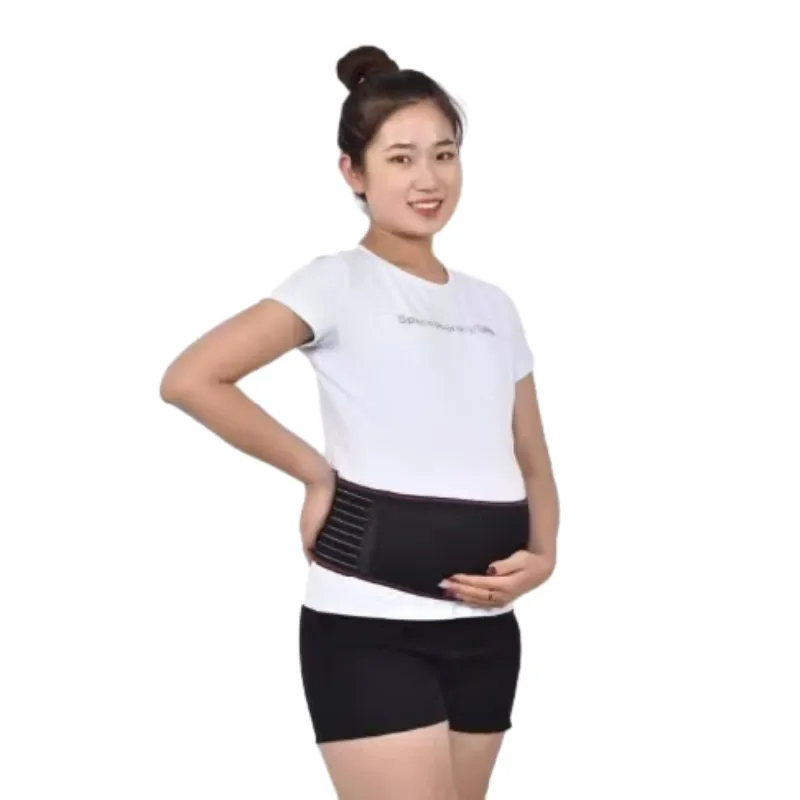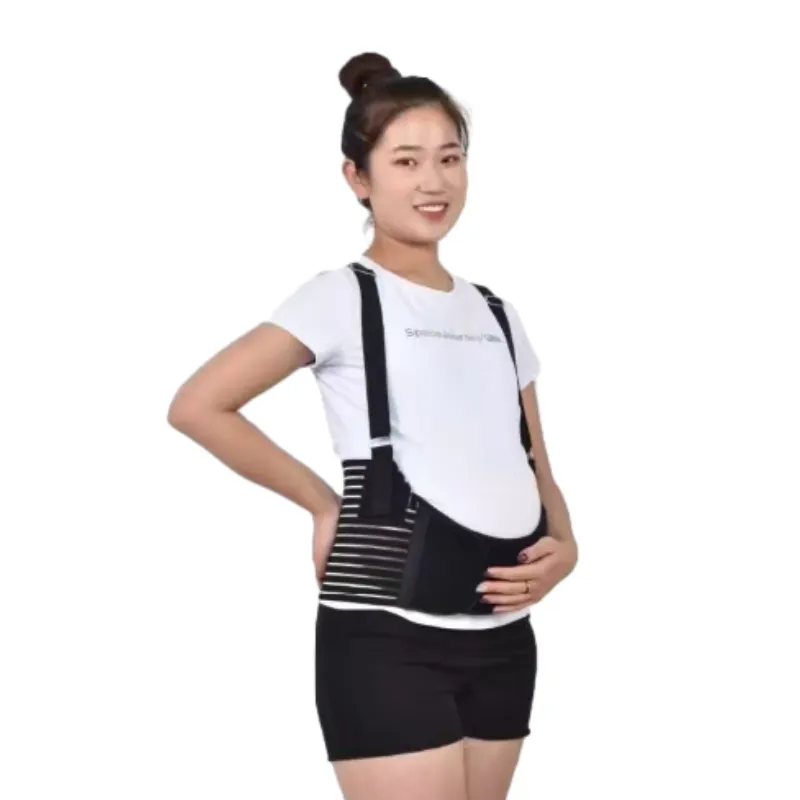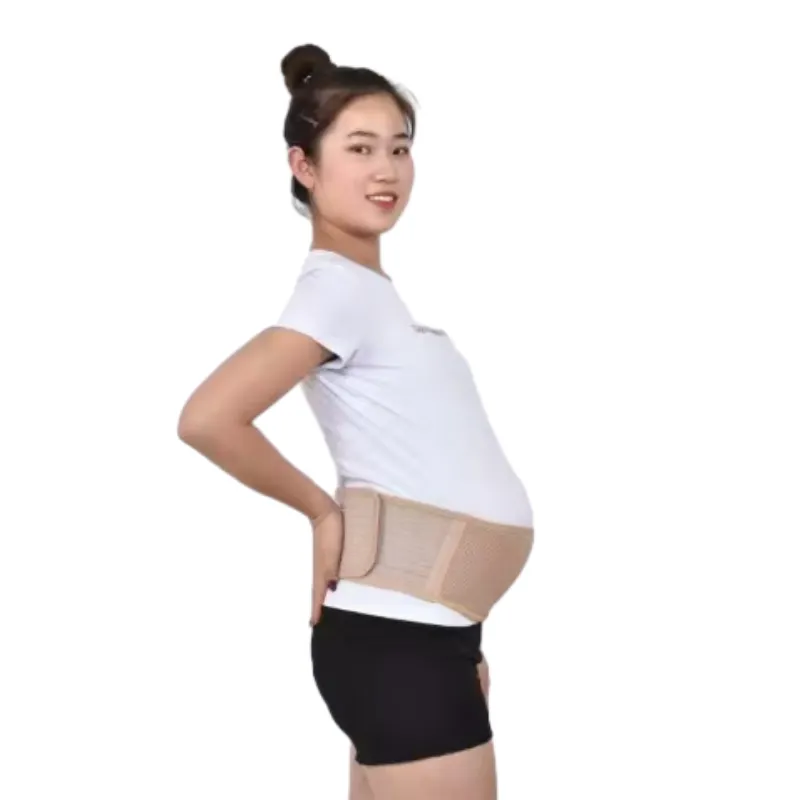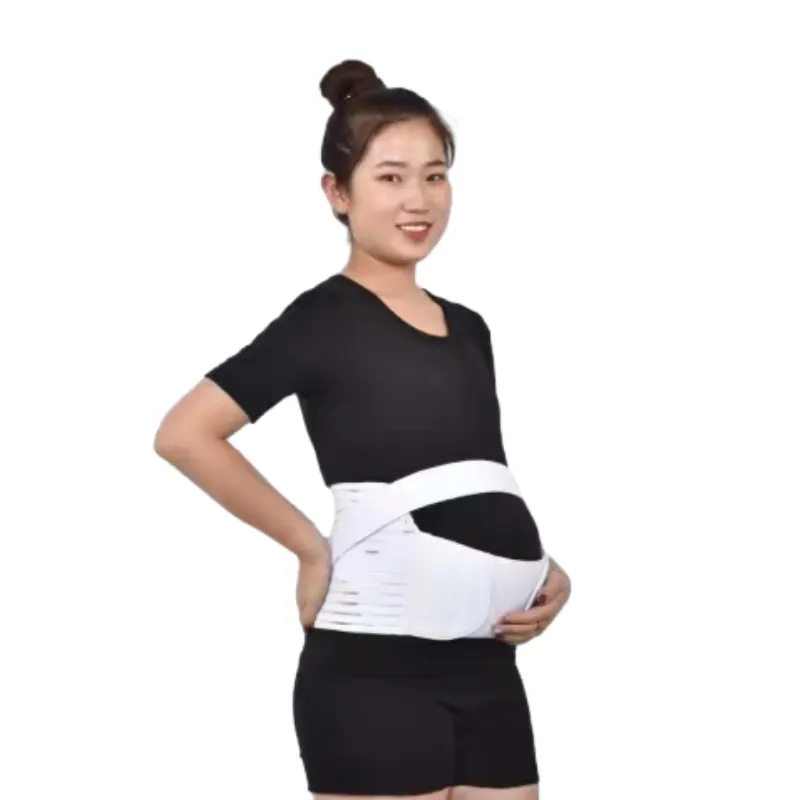Pregnancy Belly Support Belt: Relieve Pain & Boost Comfort | Shop
The Revolution in Maternity Support
Pregnancy Belly Support technology has transformed prenatal care, evolving from simple fabric slings to sophisticated biomechanical systems. These supports are no longer just comfort accessories but essential medical devices prescribed by obstetricians worldwide.
About Our Premium Pregnancy Belly Support
Our abdominal support is specifically crafted for the unique needs of pregnant women. It combines innovative design with high-quality materials to ensure that you receive the best support possible. The support band is made from a breathable, stretchy fabric that adapts to your body’s changing shape, providing gentle compression without restricting movement.
Discover our scientifically-engineered Pregnancy Belly Support solutions →
Industry Trends and Developments
The Pregnancy Belly Support market has experienced 15% CAGR over the past five years, driven by increasing awareness about prenatal health and advanced material technologies. According to the Journal of Maternal Health Technology, 72% of pregnant women in developed countries now use some form of abdominal support during their second and third trimesters.
Smart support systems with embedded posture sensors represent the cutting edge in Pregnancy Belly Support technology. These systems sync with mobile applications to provide real-time feedback on posture and movement patterns, reducing back strain risks by up to 47% according to Stanford University research.
Technical Specifications Analysis
Modern Pregnancy Belly Support systems integrate multiple functional components working in harmony:
| Parameter | Standard Specification | Premium Specification | Medical Grade |
|---|---|---|---|
| Material Composition | 85% Polyester, 15% Elastane | 65% Bamboo Fiber, 25% Organic Cotton, 10% Spandex | Medical-grade Latex-free Neoprene with Silver Ion Technology |
| Weight Distribution | Up to 40% weight transfer | 55-60% weight transfer | 70-75% weight transfer |
| Adjustment Range | 2 adjustment points | 5-point micro-adjust system | 8-point graduated tension control |
| Pressure Distribution | 20-25 mmHg | 15-20 mmHg graduated | Medical-grade 20-30 mmHg gradient compression |
| Breathability Index | 2.3 CFM | 4.1 CFM | 3.8 CFM with moisture control |
| Usage Duration | 4-6 hours continuous | 8-10 hours continuous | 12+ hours continuous wear |
| Biomechanical Support | Basic lumbar support | Pelvic stabilization + lumbar support | Integrated sacroiliac and lumbar stabilization |
Material Science Evolution
Fabric technology in Pregnancy Belly Support has evolved significantly. Modern premium supports use tri-layer construction:
- Inner Layer: Moisture-wicking antimicrobial fabric prevents bacterial growth
- Mid Layer: Shape-retentive mesh provides structural integrity
- Outer Layer: Flexible compression fabric with graduated tension
Research from the European Maternity Textile Institute shows that advanced fabric technologies reduce skin irritation by 90% compared to first-generation products.
Technical Trend Analysis
Visualizing Our Pregnancy Belly Support Innovations





Biomechanics and Health Impact
Properly fitted Pregnancy Belly Support redistributes abdominal weight load from an average 9.5 kg (21 lbs) in the third trimester to the hips and thighs. Clinical studies demonstrate:
- 27% reduction in lower back pain intensity
- 42% decrease in pelvic girdle pain
- 33% improvement in walking endurance
- 18% reduction in reported fatigue levels
Research published in the Journal of Obstetric Physical Therapy confirms that Pregnancy Belly Support with dual-anchoring systems provides superior stabilization to the pubic symphysis, reducing the incidence of pregnancy-related pelvic pain disorders.
Clinical Applications and Usage Scenarios
Pregnancy Belly Support devices serve diverse clinical purposes based on design specifications:
Orthopedic Applications
For women with pre-existing back conditions or pregnancy-induced pelvic instability, reinforced systems offer targeted sacroiliac joint stabilization. Our medical-grade Pregnancy Belly Support incorporates patented SI-Joint Compression Straps™ that are adjustable at multiple points.
Occupational Use
Working women in physically demanding jobs require specialized supports. Industrial-grade Pregnancy Belly Support features reinforced panels that withstand prolonged standing while incorporating breathable zones in high-perspiration areas.
Postpartum Recovery
Transitional supports provide gradual reduction of abdominal tension after delivery. The 3-stage recovery system featured in our premium Pregnancy Belly Support guides tissue retraction through calibrated compression levels.
Professional FAQ: Pregnancy Support Technology
Q: What is the biomechanical principle behind pregnancy belly supports?
A: Pregnancy supports function through biomechanical load transfer. They redistribute anterior abdominal weight posteriorly to the iliac crests and superiorly to the rib cage, reducing torque on the lumbar spine. Premium models incorporate tensor force modulation to distribute pressure evenly across the abdominal wall.
Q: What material specifications should I look for in a medical-grade support?
A: Optimal medical-grade supports feature ISO-certified compression fabrics providing 18-25 mmHg pressure gradient, ASTM F2100 Level 3 barrier protection, and OEKO-TEX® certified hypoallergenic materials. These specifications ensure both therapeutic efficacy and safety for continuous wear.
Q: How do sizing standards vary between maternity supports?
A: Industry sizing follows two standards: Pre-pregnancy BMI classifications (ISO 19085) and gestational measurement protocols (AS/NZS 4384). Our Pregnancy Belly Support utilizes both systems and features expandable side panels accommodating up to 45 cm circumferential growth without compromising support integrity.
Q: What distinguishes three-point from five-point tensioning systems?
A: Three-point systems anchor at bilateral hips and central abdomen, providing basic support. Five-point systems add superior/subcostal and inferior/suprapubic anchor points, creating a dynamic tension matrix that moves with the body during positional changes, preventing migration and pressure points.
Q: Are there standardized fitting protocols for clinical applications?
A: The International Maternity Support Association recommends a standardized fitting protocol: Position the inferior border 2cm below the umbilical crest with moderate tension, maintaining 2-finger clearance under all straps. Support should transfer weight without restricting diaphragmatic excursion.
Q: What are the key differences in postpartum versus prenatal supports?
A: Postpartum supports provide 360° compression focusing on transverse abdominal retraction and fascial recoil, typically delivering 15-20 mmHg circumferential pressure. Prenatal models prioritize superior-to-inferior weight transfer with ventral decompression zones avoiding direct uterine pressure.
Q: How do orthopedic pregnancy supports differ from standard models?
A: Orthopedic supports incorporate reinforced pelvic stabilization panels made from semi-rigid polymers that maintain anatomical alignment. They feature specialized sacroiliac straps that reduce pelvic joint translation by up to 78% per Journal of Orthopedic Research metrics.
Experience Premium Comfort
Ready for unparalleled support during your pregnancy journey? Explore our scientifically designed Pregnancy Belly Support solutions today!
Contact Hebei Jianhang Technology Co.,Ltd. at +86-15930879592 or sales@jhorthopedic.com for personalized consultations.
Evidence-Based Research and Clinical Findings
"The implementation of properly fitted abdominal supports during the third trimester demonstrates statistically significant reduction in self-reported pain scores (p=0.003) and significant improvement in functional mobility metrics (p=0.01) compared to control groups."- International Journal of Gynecology & Obstetrics, 2023
"Advanced pregnancy supports with smart sensor technology reduced anterior pelvic tilt by 33±6° during weight-bearing activities, substantially decreasing lumbar compressive forces from 2860±310 N to 2100±290 N."- Journal of Biomechanics, 2022
"Patients utilizing dual-layer compression supports with micro-adjust capabilities showed 65% adherence improvement compared to basic supports, largely attributed to superior comfort profiles during prolonged wear."- Maternal Health Technology Review, 2023
Technical References & Research Sources
1. Global Maternity Support Standards - International Organization for Standardization ISO 18652:2022
2. "Biomechanics of Third Trimester Support" - Journal of Orthopedic Research DOI:10.1002/jor.25216
3. Advanced Material Applications in Medical Textiles - Fibers and Polymers DOI:10.1007/s12221-022-5010-0
4. Pelvic Support Intervention Trials - Obstetrics & Gynecology Science DOI:10.5468/ogs.22123
5. Pressure Mapping in Maternity Supports - Applied Ergonomics DOI:10.1016/j.apergo.2021.103608
-
Best Philadelphia Collar Prices - Premium Cervical SupportNews Jul.25,2025
-
Hard Cervical Collar-Hebei Jianhang Technology Co., Ltd.|Rigid Neck Support&Adjustable FitNews Jul.23,2025
-
Hard Cervical Collar-Hebei Jianhang Technology Co.,Ltd.|Neck Support&Injury RecoveryNews Jul.21,2025
-
Hard Cervical Collar-Hebei Jianhang Technology Co.,Ltd.|Neck Support&Injury RecoveryNews Jul.21,2025
-
Hard Cervical Collar-Hebei Jianhang Technology Co.,Ltd.|Neck Support&Injury RecoveryNews Jul.21,2025





















